In the system shown in fig. m1>m2 . The system is held at rest by thread BC. Now thread BC is burnt. Answer the following:
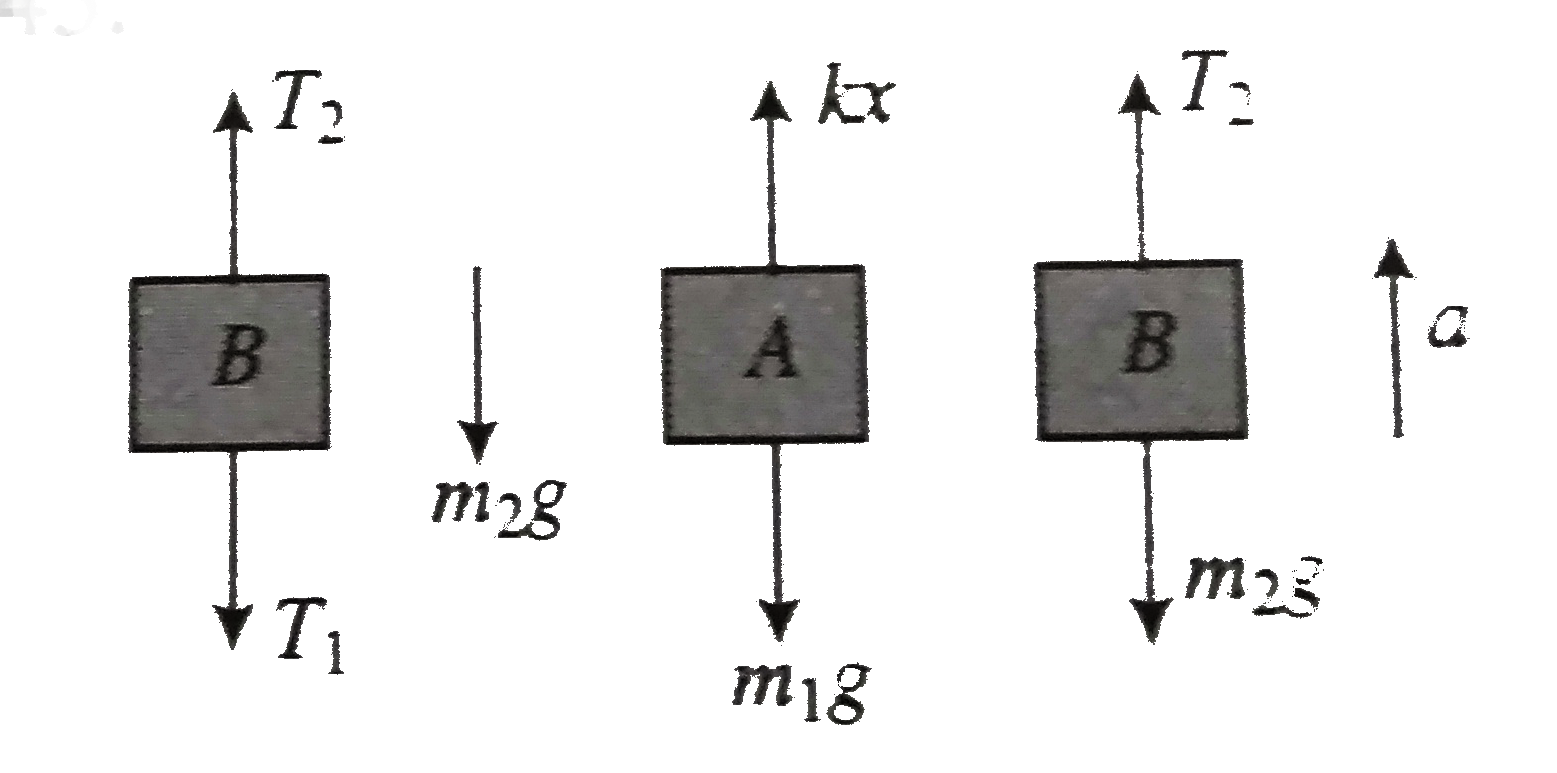
Just after burning the thread, what is the acceleration of m2?
(m2−m1m2)g
(m1−m2m1+m2)g
Zero
(m1−m2m2)g
The correct Answer is:D
Before Burning BC, the free-body diagram are shown in the fig.

T2=T1+m2g …(i)
kx=T2=m1g..(ii)
where x is extension in the spring. Just after burning, T1 will become zero. but T2 will remain same.
T2−m2g=m2g⇒a=(m1−m2g)m2
As T2 remains same, acceleration of block A will still remain zero.
Topper's Solved these Questions
- BOOK - CENGAGE PHYSICS ENGLISHCHAPTER - NEWTON'S LAWS OF MOTION 1EXERCISE - Integer5videos
NEWTON'S LAWS OF MOTION 1
- BOOK - CENGAGE PHYSICS ENGLISHCHAPTER - NEWTON'S LAWS OF MOTION 1EXERCISE - Assertion-reasoning15videos
NEWTON'S LAWS OF MOTION 1
- BOOK - CENGAGE PHYSICS ENGLISHCHAPTER - MISCELLANEOUS VOLUME 2EXERCISE - INTEGER_TYPE10videos
MISCELLANEOUS VOLUME 2
- BOOK - CENGAGE PHYSICS ENGLISHCHAPTER - NEWTON'S LAWS OF MOTION 2EXERCISE - Integer type1videos
NEWTON'S LAWS OF MOTION 2
Similar Questions
In the system shown in figure m1>m2. System is held at rest by thread BC. Just after the thread BC is burnt.
 View Solution
View SolutionIn the system shown in fig. m1>m2 . The system is held at rest by thread BC. Now thread BC is burnt. Answer the following:

Before burnig the thread, what are the tensions in spring and thread BC, respectively?View Solution
In the system in the figure m1>m2 system is held at rest by thread BC. Just after the thread BC is burnt:View SolutionTwo blocks of masses m1 and m2 are connected with a light spring of force constant k and the whole system is kept on a frictionless horizontal surface. The masses are applied forces F1 and F2 as shown in fig. At any time the blocks have same acceleration a0 but in opposite direction. Now answer the following :

If F2 is removed at this moment, then just after the acceleration of m2 isView SolutionFor the system shown in fog. m1>m2>m3>m4. Initially, the system is at rest in equilibrium condition., if the string joining m4 and ground is cut, then just after the string is cut.
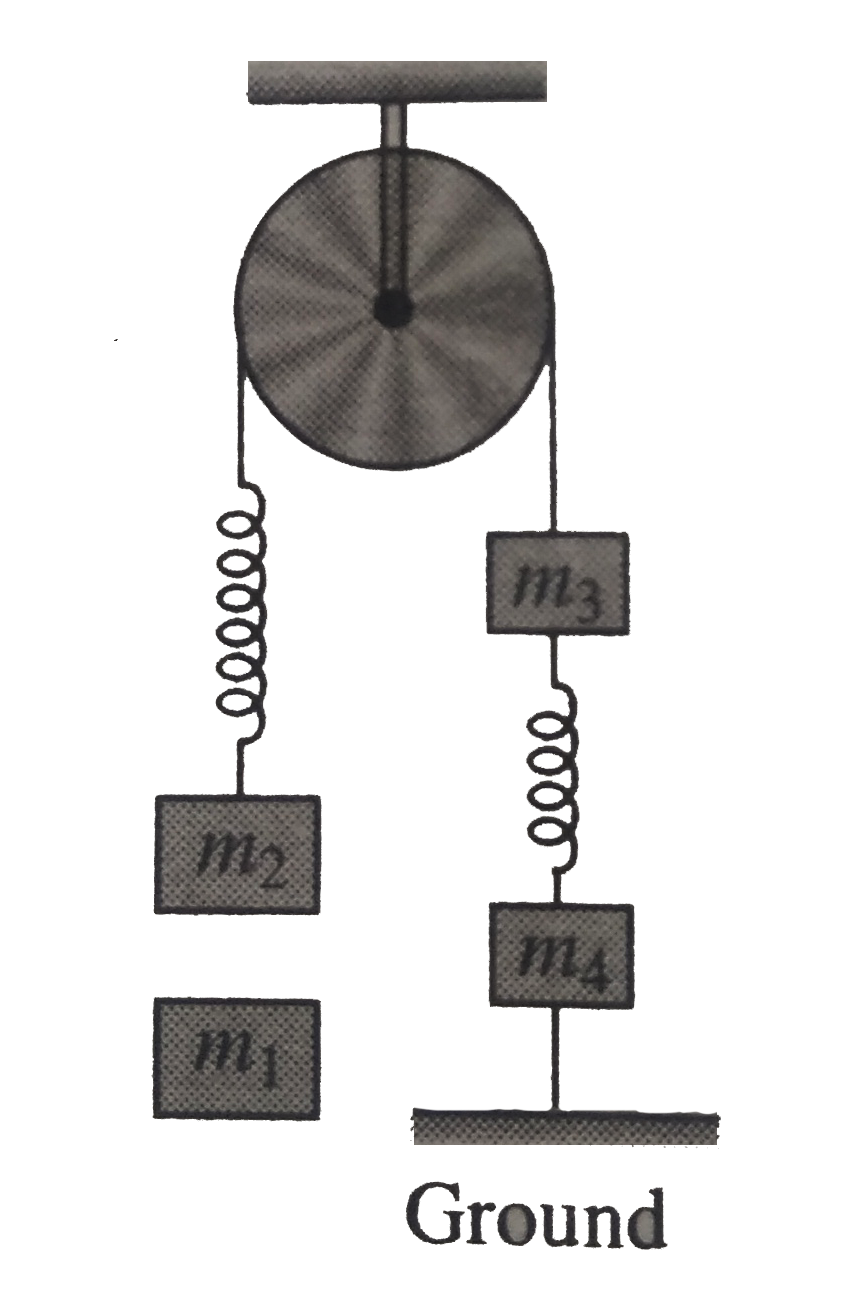
Statement I: m1,m2,m3 remain stationary.
Statement II: The value of acceleration of all the four blocks can be determined.
Statement III: Only m4 remain stationary.
Statement IV: Only m4 accelerates.View SolutionIn the system shown in fig., mA=4m, mB=3m, and mc=8m. Friction is absent everywhere. String is inextensible and light. If the system is released from rest, then

Acceleration of Block B isView SolutionA mass m1 lies on fixed, smooth cylinder . An ideal cord attached to m1 passes over the cylinder and is connected to mass m2 as shown in the figure.
(a) Find the value of θ( shown in diagram ) for which the system is in equilibrium.
(b) Given m1=5kg,m2=4kg . The system is released from rest when θ=30∘ . Find the magnitude of acceleration of mass m1 just after the system is released.
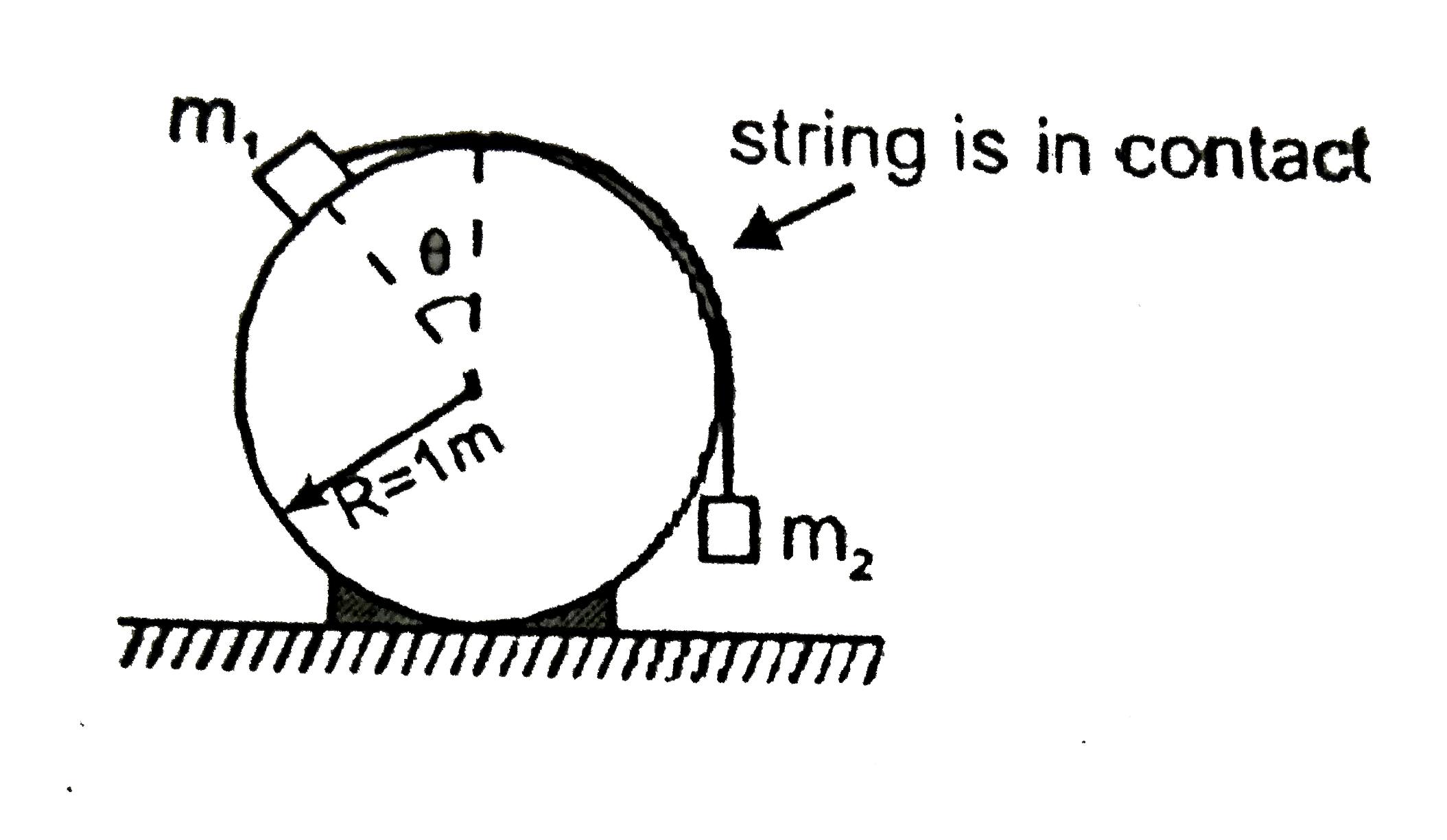 View Solution
View SolutionThe system shown in the figure is in equilibrium at rest. The spring and string are massless Now the string is cut. Find the acceleration of the blocks just after the string is cut.
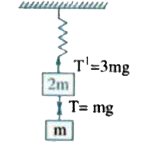 View Solution
View SolutionTwo small balls of the same size and of mass m1 and m2(m1>m2) are tied by a thin weightless thread and dropped from a ballon. Determine the tension T of the thread during the flight after the motion of the balls has become steady-state.
View SolutionThe pulley of the system shown in Fig is massless and frictionless and thread and thread is inextensible Then horizontal surface over which block C is smooth while for all the remaining surface is μ
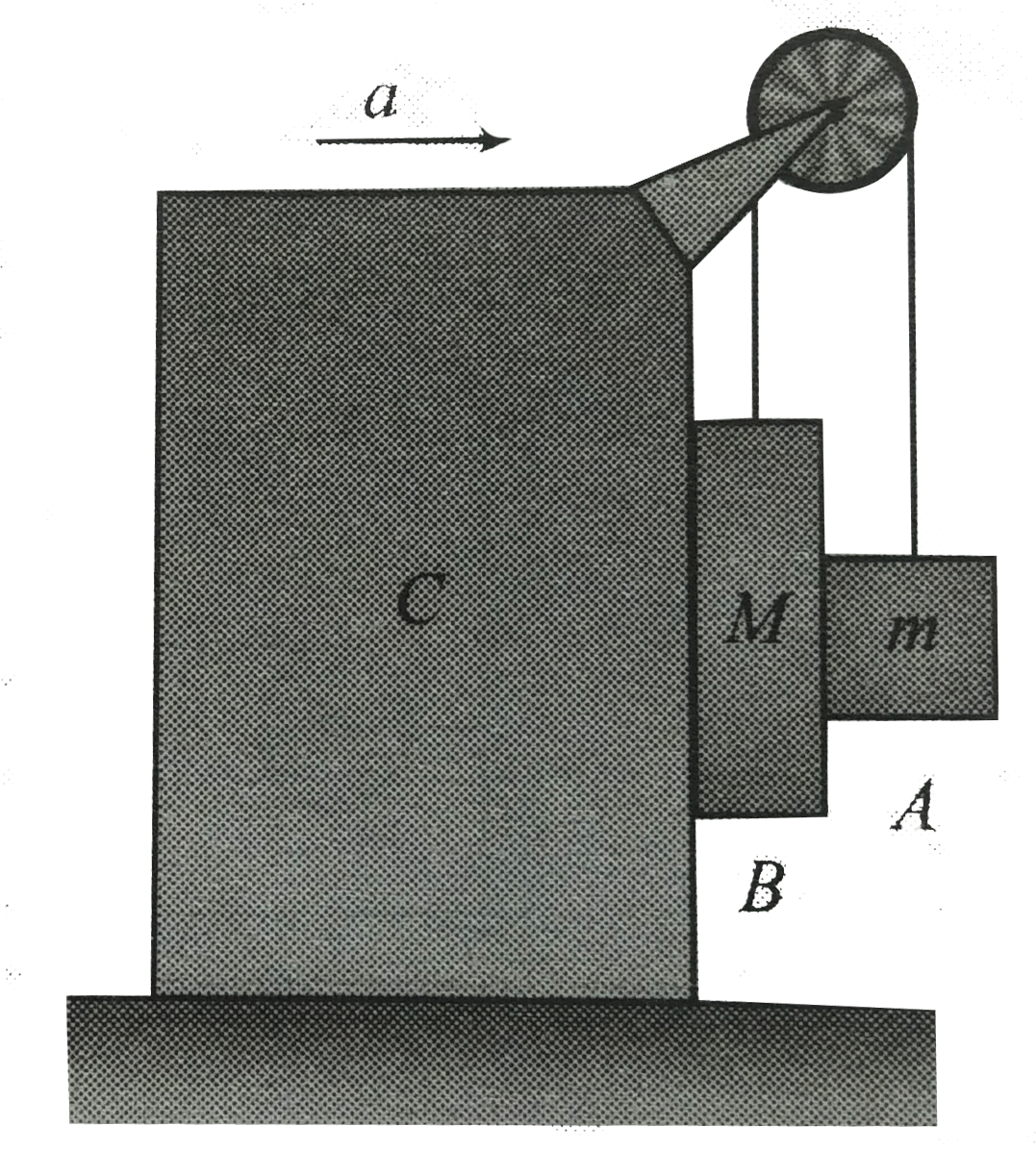
Calculate minimum acceleration a with which the system should be moved to the right so that suspented block A(mass m ) and B (mass M and M>m)can remain stationary relative to CView Solution

